 | Daniel Adams - Arithmetic - 1831 - 276 pages
...difference. Hence, when the extremes and number of terms are given, to find the common difference, — Divide the difference of the extremes by the number of terms, less 1, and the quotient will be the common difference. 6. If the extremes be 5 and 605, and the number... | |
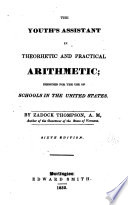 | Zadock Thompson - Arithmetic - 1832 - 186 pages
...Hence, II. The first term, the last term, and the number of term* given to fmd the common difference. RULE. — Divide the difference of the extremes by the number of terms, less 1, and the quotient will be the common difference. 2. If the first term of a series be 8, the last... | |
 | William Ruger - Arithmetic - 1832 - 282 pages
...striking. CASE III. — The extremes and number of terms being .given, to find the common difference. RULE — Divide the difference of the extremes by the number of terms, less 1, and the quotient will be the common difference. EXAMPLES. 1. A merchant sold 200 yards of cloth... | |
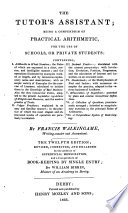 | Francis Walkingame - 1833 - 204 pages
...basket ? Ans. 5 miles, 1 300 yards. Case 2. The same three terms giren, tojind the common difference. RULE. Divide the difference of the extremes by the number of terms less 1 ; and the quotient will be the answer. (4) A man had eight sons, whose ages were in arithmetical... | |
 | Daniel Adams - Arithmetic - 1833 - 268 pages
...difference. ' Hence, when the extremes and number of terms are given, • to find the common difference, — Divide the difference of the extremes by the number of terms, less 1, and the quotient will be the common difference. 6. If the extremes be 5 and 605, and the number... | |
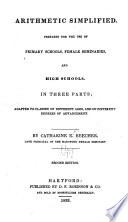 | Catharine Esther Beecher - Arithmetic - 1833 - 296 pages
...difference. Hence, when the extremes and number of terms are given, to find the common difference, Divide the difference of the extremes, by the number of terms less 1. 2. Extremes 3 and 19 ; number of terms 9. Required the common difference. A. 2. 3. Extremes 4 and... | |
 | George Alfred - Arithmetic - 1834 - 336 pages
...the two extremes and the number of terms are given, to find the common difference of all the terms. RULE. Divide the difference of the extremes by the number of terms less 1, and the quotient will be the common difference of all the terms. / , m . EXAMPLES. ' .:•• "... | |
 | James L. Connolly (mathematician.) - Arithmetic - 1835 - 264 pages
...cents, * The first term, the last term, and the number of terms, given to find the common difference. RULE. Divide the difference of the extremes by the...one, and the quotient will be the common difference, or fourth term. Or, from the second term subtract the first, and the remainder divided by the third... | |
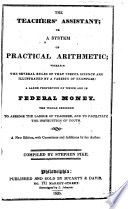 | Stephen Pike - Arithmetic - 1835 - 210 pages
...extremes and number of terms are given, to find the common difference. ARITHMETICAL PROGRESSION. 173 RULE. Divide the difference of the extremes by the number of terms. less one; the quotient will be the common difference. EXAMPLES. 1. Twenty and sixty are the two extremes of a... | |
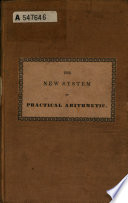 | Charles Potts - Arithmetic - 1835 - 202 pages
...yards. CASE 2. When the two extremes, and number of terms are given to find the common difference. RULE. Divide the difference of the extremes by the number of terms, less 1 ; the quotient will be the common difference. EXAMPLES. 1. The extremes are 3 and 19, and the number... | |
| |